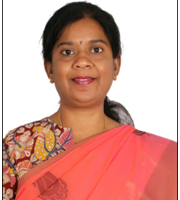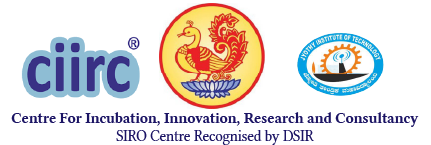Manuscriptology and Validation of Scientific Aspects of Technology from Ancient India
Overview
A manuscript is a handwritten composition on paper, bark, cloth, metal, palm leaf or any other material dating back at least seventy-five years that has significant scientific, historical or aesthetic value. Lithographs and printed volumes are not manuscripts. Manuscripts are found in hundreds of different languages and scripts. Often, a language is written in a number of different scripts. For example, Sanskrit is written in Oriya script, Grantha script, Devanagari script and many other scripts.

Script
Script is a particular system or style of writing. It can be comprehended as symbolic representation of the sounds of a particular language. There are some ancient scripts which are taught in manuscriptology & palaeography workshops, i.e. Brahmi, Gupta, Kutila, Nagari, Nandinagari, Pali, Prakrit, Tigalari, Sharada, Grantha, Kharosthi, vattelutu, Kaithi, Karani, Odiya, Modi, Siddham, Lepcha, Naskh, Nasta’liq, Kufic, etc.
Most of the Indian scripts used for writing 70% of manuscripts are in Sanskrit. The remaining 30% are written in Assamese, Bengali, Chakma, Dogri, Gujarati, Hindi, Kannada, Kashmiri, Konkani, Maithili, Malayalam, Meithei /Manipuri, Marathi, Nepali, Newari/ Nepal Bhasa, Odiya, Punjabi, Tamil, Telugu, Urdu, etc.
Knowledge Areas in Manuscripts
Medicine, astronomy, religion, philosophy, mythology, mathematics, and many others.
Materials
Birch barks, palm leaf, handmade paper, cloth, copper plates, leather, etc. are some materials.
At the Centre, Manuscriptology was initiated in 2021 with focus on the following objectives:
Research Focus
- To create an awareness about the value of the manuscripts and their scientific preservation, including conducting workshops and seminars.
- Proper Documentation of manuscripts according to NMM standards.
- Restoration (remedial conservation) of deteriorated manuscripts.
- Preventive conservation of manuscripts that do not require restoration.
- Digitization of manuscripts to ensure that the knowledge it contains is available for future generations.




Overview
Science and Technology had reached its pinnacle in ancient India. The study of ancient scientific disciplines has seen exponential growth and has made important contributions to the understanding of the progress of modern science, involving linguist and philologist methods. Many interesting and invaluable documents/scriptures that encompass ancient knowledge can be found in various disciplines including Ayurveda, Mathematics, Astrology, Astronomy, Archaeology, History, Physics, Chemistry, Metallurgy, Biology, Medicine, Alchemy, Atomic Science, Fine arts (Music, Sculpture and Iconography), Architecture and Languages all of which, when amalgamated with modern science, can lead to the development of novel technologies. The study of Ancient Indian Science and Technology stems from a need to
- Characterize the contemporary society
- Revisit ancient Indian eco-friendly engineering practices
- Act as a pointer to the greatest promises and threats of modern science
- Explain its impact on economy, medical science, and the military
- Sustain and integrate the stratified class of modern science with ancient Indian science, leading to multi-disciplinary research
The group is addressing numerous aspects related to materials as enunciated below :
Durable Cement
-
- Preparation of organic environment friendly cement lasting for millions of years
- Tempering of sword / Iron tools
- Retention of sharpness at the edges of cutting tools based on ancient Indian tempering processes

- Metal Cement
- Combination of few metals in specific proportions yielding strong metallic cement, commonly used in the construction of Ancient Indian temples
- Transformation of copper to golden color
- Conversion of copper to golden color for its possible application in solar cells and also testing for its anticorrosion properties
- Natural soil plasticizers
- Optimization of the proportion of addition of natural soil plasticizers as a combination of herbal extracts, natural fibres and natural polymers leading to soil stabilization
- Lime mortars/plasters
- Formulation of eco-friendly lime mortar/plaster, as a better alternative to the existing Portland cement, due to its flexibility, ability to self-heal and incredible durability

- Revival of Ancient Iron Smelting Technology
- Production of high quality iron and steel using low grade iron ores, by employing practices in harmony with nature and construction of eco-friendly furnaces, in line with ancient Indian metallurgical practices

- Natural Water Purifier
- Purification of water using various plant materials which are low cost eco-friendly alternative for rural areas
- Siribhuvalaya: Unfolding the underlying Mathematical ideas/concepts, unearthing & developing novel encryption techniques and unfurling of the multi-lingual scientific knowledge encompassed in the ancient Indian treatise Siribhuvalaya; collation of the data and to bring to light the ancient Indian science as it would lead to repository of information beneficial to various segments of society
- Siribhuvalaya, a Numeric-lingual poesy is a compendium of Indian culture, philosophy, religion, art and science
- It encompasses literature in 718 languages of the world, thoughts on 363 religions/ philosophies and detailed information about 64 art forms including Animal Husbandry, Atomic Science, Aerospace/Space Travel, Mathematics, Computer Science, Ayurveda, Astrology, Physics, Chemistry, Metallurgy, Musicology, Dramatic Arts, etc.
- It induces a revolutionary concept of different encryption techniques
- Each page (matrix) of this treatise corresponds to a ‘chakra’ and a scheme for deciphering of a chakra is termed as ‘bandha’
Multilingual Phonetic Alphabet Encoding Scheme
(for implementation of mono-alphabetic substitution cipher)


Shreni Bandha Encryption Pattern – first chapter of Siribhuvalaya

First Matrix of Siribhuvalaya – Substitution of numeral with Kannada alphabets
1. Padmashree Anand, Mohan C.B. Studies on an Ancient Aircraft Material – Panchaloha. Journal of Scientific and Industrial Research (2017) 76:446-449. IF: 0.5
2. Sandeep Suryan, Nagananda G.S, Hamsapriye, Padmashree Anand, and Swetha Seshagiri, An ethnobotanical comparative analysis of the pharmacological aspects of Annona reticulate, Annona squamosal and Annona muricata, with mathematical modeling, RJPBCS, 9(1), Jan-Feb 2018, 326-336
3. A Padmashree, C B Mohan and K Gopalakrishna, Experimental Studies on Vataharana Loha – An Ancient Aircraft Material, Journal of Scientific and Industrial Research, 77(8), August 2018, 478-480 IF: 0.5
4. Padmashree A, Hamsapriye, Nagananda G S, Sandeep S and Swetha S, Mathematical approach to analysis of therapeutic properties of four important flowers mentioned in Siribhoovalaya- An ancient Indian multilingual manuscript, Indian Journal of Traditional Knowledge, 19(4), October 2020, 804-812
The following facilities are available at the lab:
Digitizer
Furnace (1200 o C)
Conservation Set-up
- Enhancement of the mechanical properties of ferrous materials using ancient metallurgical techniques – SSPS
- Scientific Validation and Revival of Ancient Indian Technology: Re-visiting Eco-friendly Engineering Practices- SSPS
- Unearthing and Development of Novel Encryption Techniques as well as Unfurling Multilingual Scientific Knowledge entrenched in the Ancient Indian Numeric-lingual Treatise “Siribhuvalaya”- SSPS
- Pigment analysis of Mysore Paintings

Padmashree Anand
Padmashree Anand, an alumnus of Mangalore University, holds a Ph.D. in Material Science. She has specialized in ancient Indian materials with reference to Bharadwaja’s Vymanika Sastra on Vataharanaloha and Panchaloha. She holds a Master’s in Organic Chemistry and a Master’s in Sanskrit from KSOU having topped the university. She has undergone NPTEL online certifications in Casting Technology, Ancient Indian Sciences and Architectural Conservation and Historic Preservation from IITs. Besides these, she has completed several courses/programs such as Conservation Science Training and Research Programme (CoSTAR) – Module 1 at Lakshmi Mittal and Family South Asia Institute, Harvard University, in association with Harvard Art Museums, Harvard University & Chhatrapati Shivaji Maharaj Vastu Sangrahalaya; Prakrit Ratna from National Institute of Prakrit Studies & Research, Shravanabelagola; Diploma in Built Heritage Studies and Conservation, University of Mumbai; and, PGD in Manuscriptology and Paleography, IGNCA, Bengaluru. She is a certified manuscript conservator and has been in the academia and research for over last sixteen years.
Her current research interests include studies on ancient Indian science and technology with focus on metallurgy and civil engineering; ancient food science and technology with particular reference to pilot food as in Bharadwaja’s Vymanika Sastra; and encryption techniques as used in ancient India and manuscriptology. She has knowledge of a few ancient scripts such as Brahmi, Sharada, Grantha, Tigalari, Kannada Modi and Nandinagari. She was actively involved in R&D activities in DST funded projects on solar cells and played a key role in the successful completion of the BPR&D project. She has presented papers at national and international conferences and has a few publications to her credit. Padmashree Anand has also undergone comprehensive training on Leadership and Career Development for Women Scientists / Technologists organized by DST and Indo-US Science & Technology Forum, IISER, Pune and COACH International, USA. She is also a certified coffee brewer and has interest in music and is working as an Assistant Professor.
Email Id: padmashree.a@ciirc.jyothyit.ac.in

Mrs Manjula
Mrs. Manjula has completed Master of Arts in Manuscriptology from Karnataka Samskrit University with a Gold Medal. She’s also pursuing Ph.D in Manuscriptology from the same university. She has knowledge in some oriental scripts like Brahmi, Sharada, Devanagari, Nandinagari, Tigalari, Telugu and Kannada. With a passion for protecting our National Heritage, she has undergone practical training in conservation and digitization of Palm leaf as well as Paper manuscripts. To complement the manuscript studies, she has completed a four level course in Sanskrit Language conducted by Samkrita Bharati with distinction. Previously, having completed M.B.A from Oxford College of Business Management with Specialisation in Sales and Marketing, she has a corporate experience of more than 12 years in Sales, Marketing and Human Resource Management.
Currently Mrs. Manjula is working as a Research Fellow at Ancient Indian Sciences Lab, CIIRC, in a CSR funded Project titled “Conservation and Digitization of Manuscripts” since May 2023.
